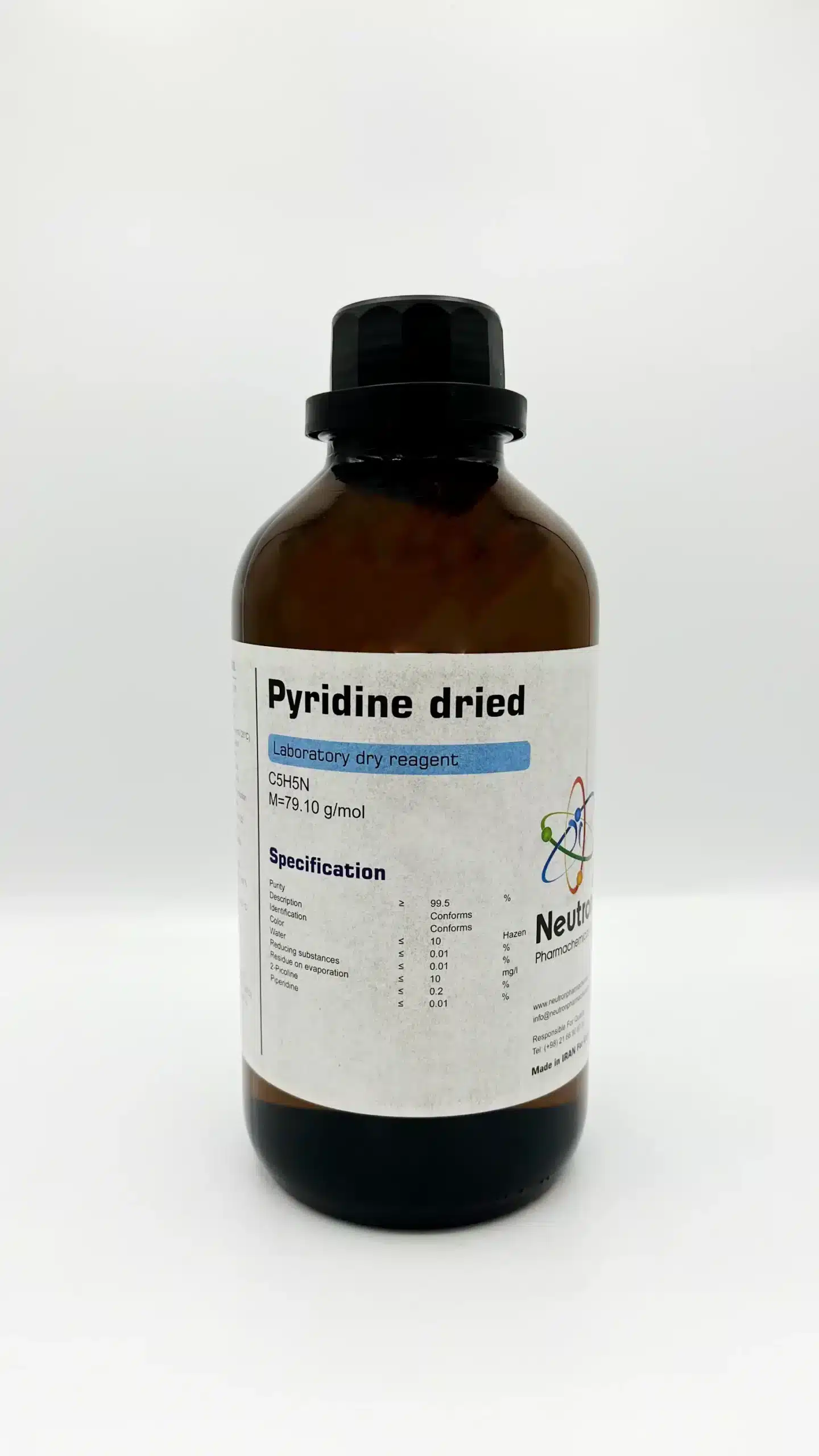Pyridine dry
| Formula | C5H5N |
| Chemical formula | C5H5N |
| Density | ~ 0.98 g/cm3 (20°C) |
| Molar mass | 79.10 g/mol |
| CAS number | 110-86-1 |
| HS Code | 29333100 |
| EC number | 203-809-9 |
| Storage | Without limitation |
| SDS | available |
| R phrase | R 11-20/21/22 |
| S phrase | S 26-28.1 |
| Odour | charactristic |
| Form | liquid |
| Color | colourless |
| Explosion limit | 1.7 to 12.4 vol % |
| Ignition temprature | 550°C |
| pH value | 8.5 (16 g/l 20 °C) |
| Solubility in water | soluble |
| Solubility in ethanol | soluble |
| Flash point | 17 °C |
| Melting point | ~-42 °C |
| Boiling point | 115 °C |
| Vapur pressure | 20 hPa (20°C) |
| Viscosity dynamical | 0.95 mPa*s (20°C) |
| Saturation Concentration | 65 g/m3 (20°C) |
| Purity | ≥ | 99.5 | % |
| Description | Conforms | ||
| Identification | Conforms | ||
| Color | ≤ | 10 | Hazen |
| Water | ≤ | 0.01 | % |
| Reducing substances | ≤ | 0.01 | % |
| Residue on evaporation | ≤ | 10 | mg/l |
| 2-Picoline | ≤ | 0.2 | % |
| Piperidine | ≤ | 0.01 | % |
Pyridine is a basic, heterocyclic organic compound similar to benzene, with one CH group replaced by nitrogen. It is a flammable, water-miscible liquid with a strong, fish-like odor. Though colorless, old or impure samples may turn yellow due to polymer formation.
🏭⚗️ Synthesis
Pyridine is synthesized by condensing aldehydes, ketones, or α,β-unsaturated carbonyls with ammonia. A common method uses formaldehyde and acetaldehyde, which first form acrolein, then condense with ammonia to yield dihydropyridine, which is oxidized to pyridine. The reaction occurs in gas phase at 400–450 °C using alumina/silica catalysts. It also produces methylpyridines.
🧪 Applications
Pesticides & Pharma: Used to make herbicides (e.g., paraquat, diquat), fungicides, and antiseptics like cetylpyridinium chloride.
Lab Use: Acts as a polar, basic solvent; used in reactions like Knoevenagel condensations, esterifications, and acylations. Derivatives like DMAP are more reactive in such processes.
⚠️Safety
Pyridine is a flammable and toxic organic compound. It causes irritation to eyes, skin, and respiratory tract, and may harm internal organs with prolonged exposure. Handle only with proper protective equipment and ventilation.



